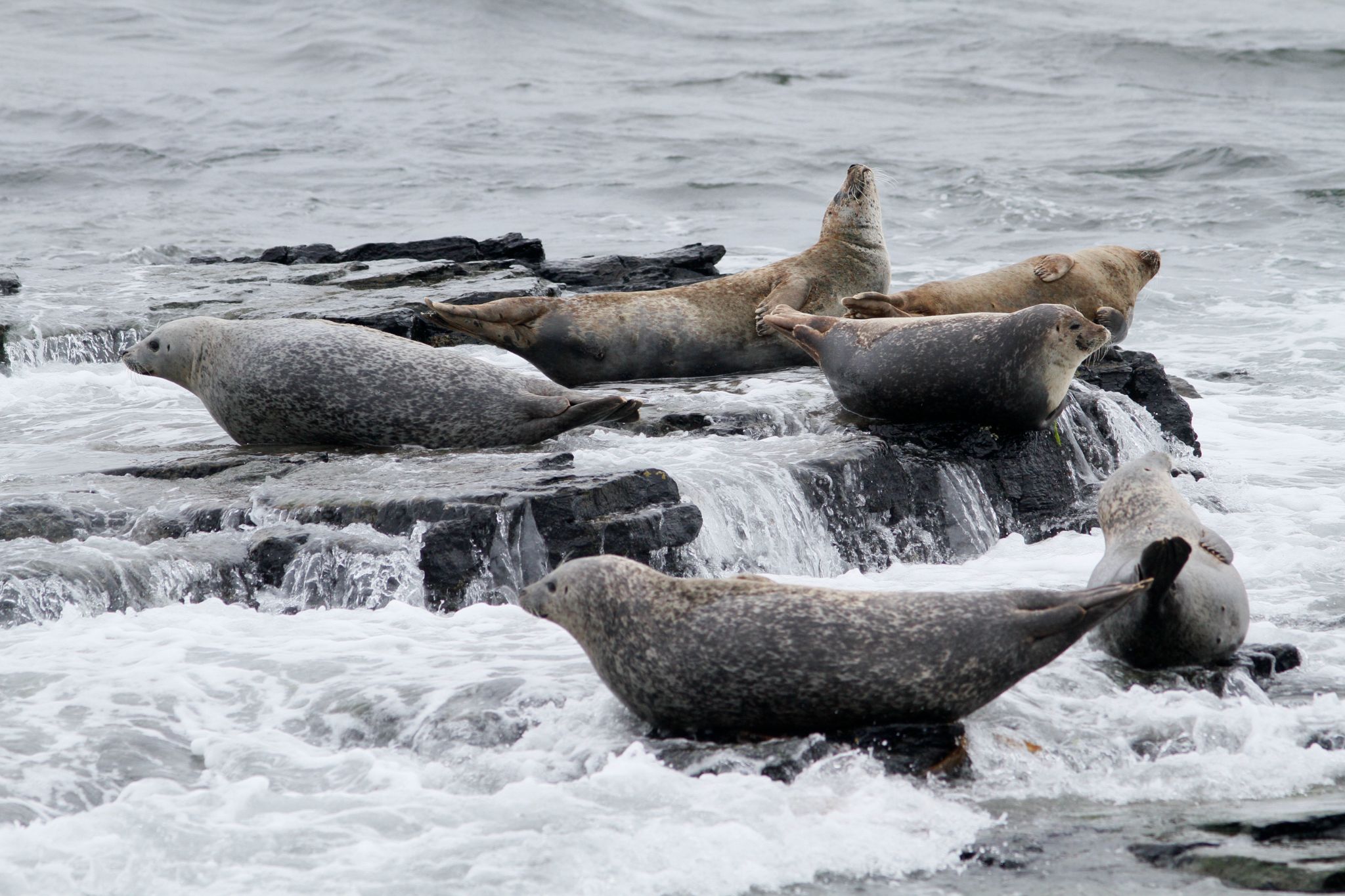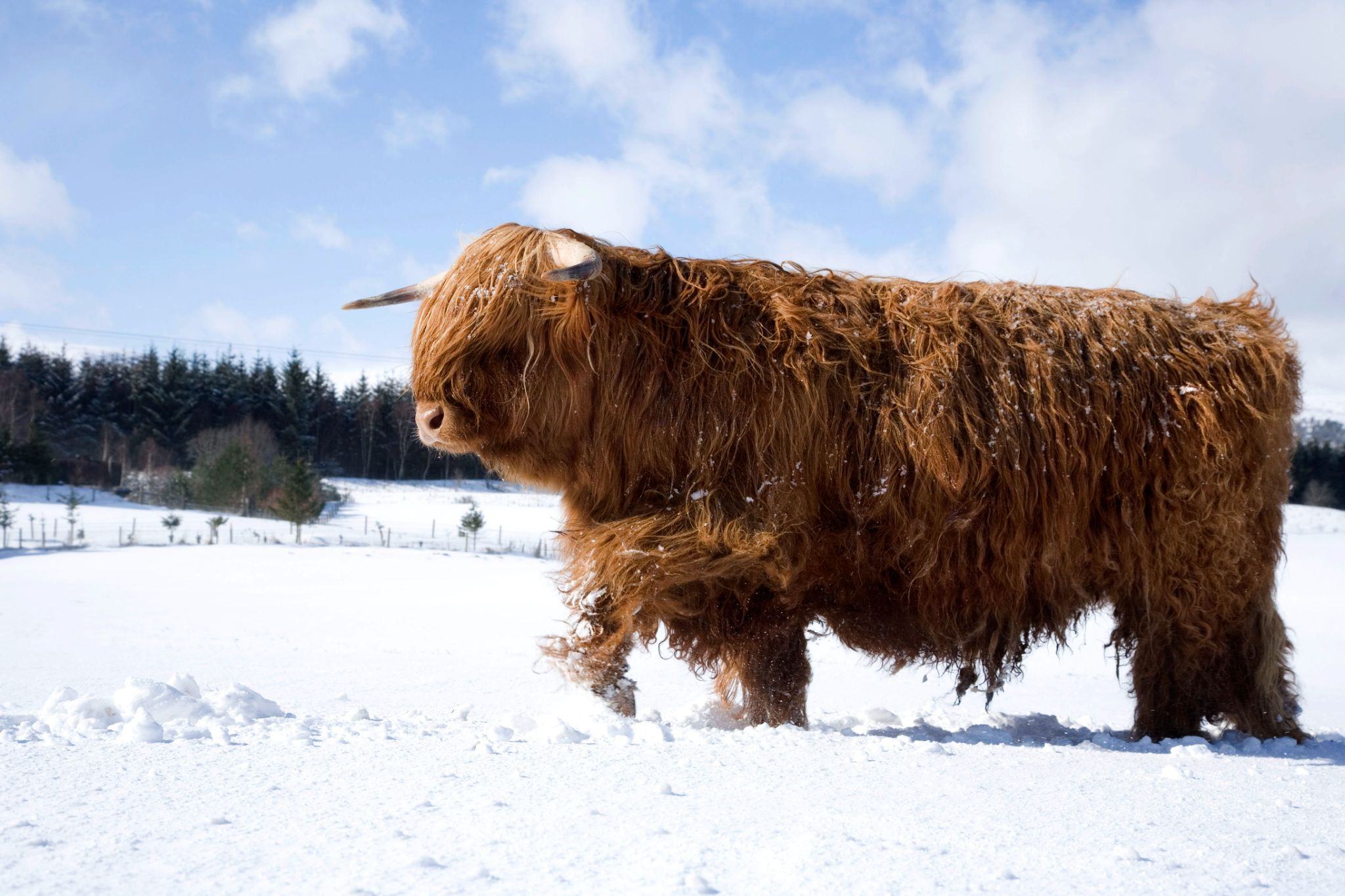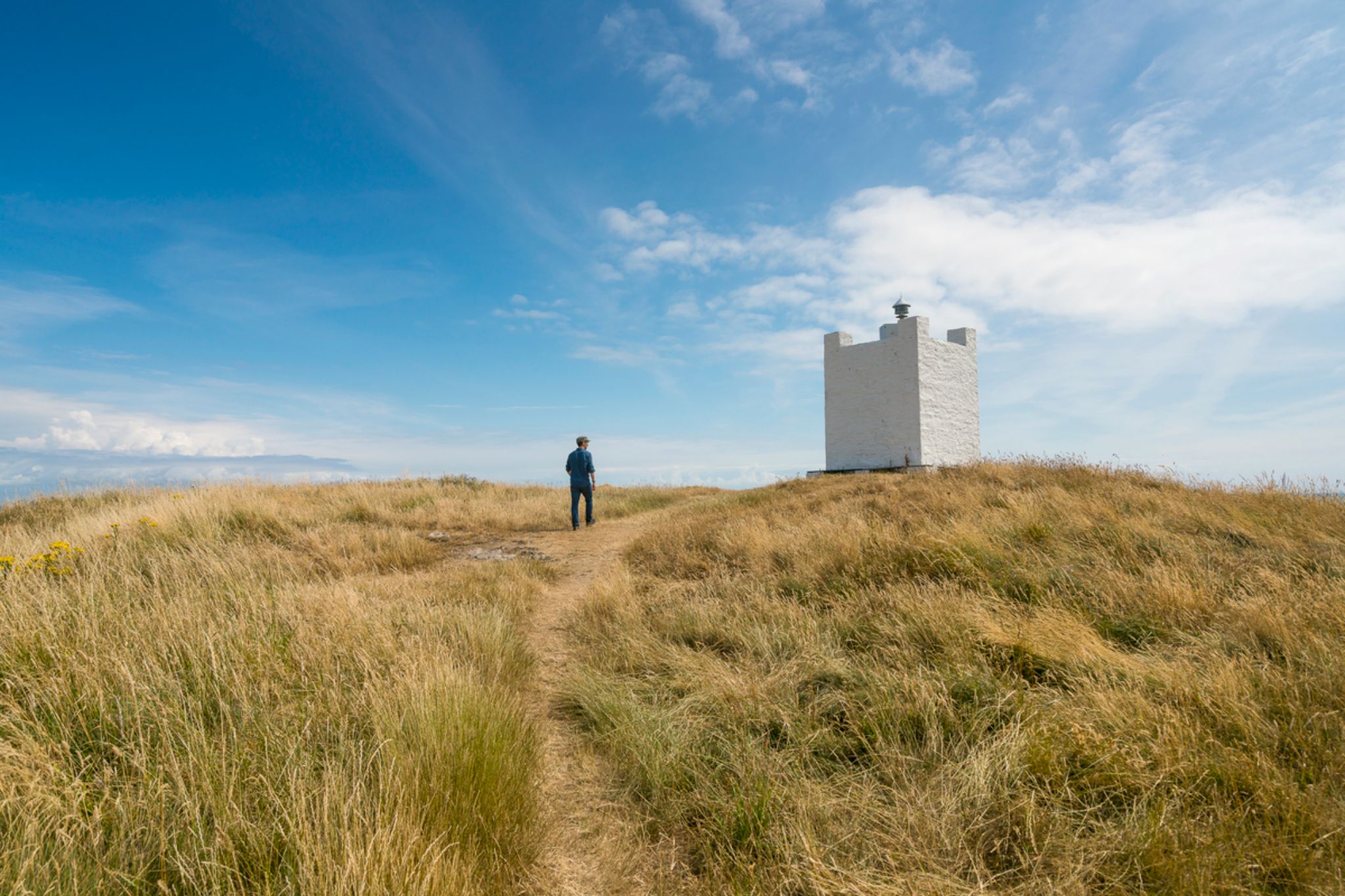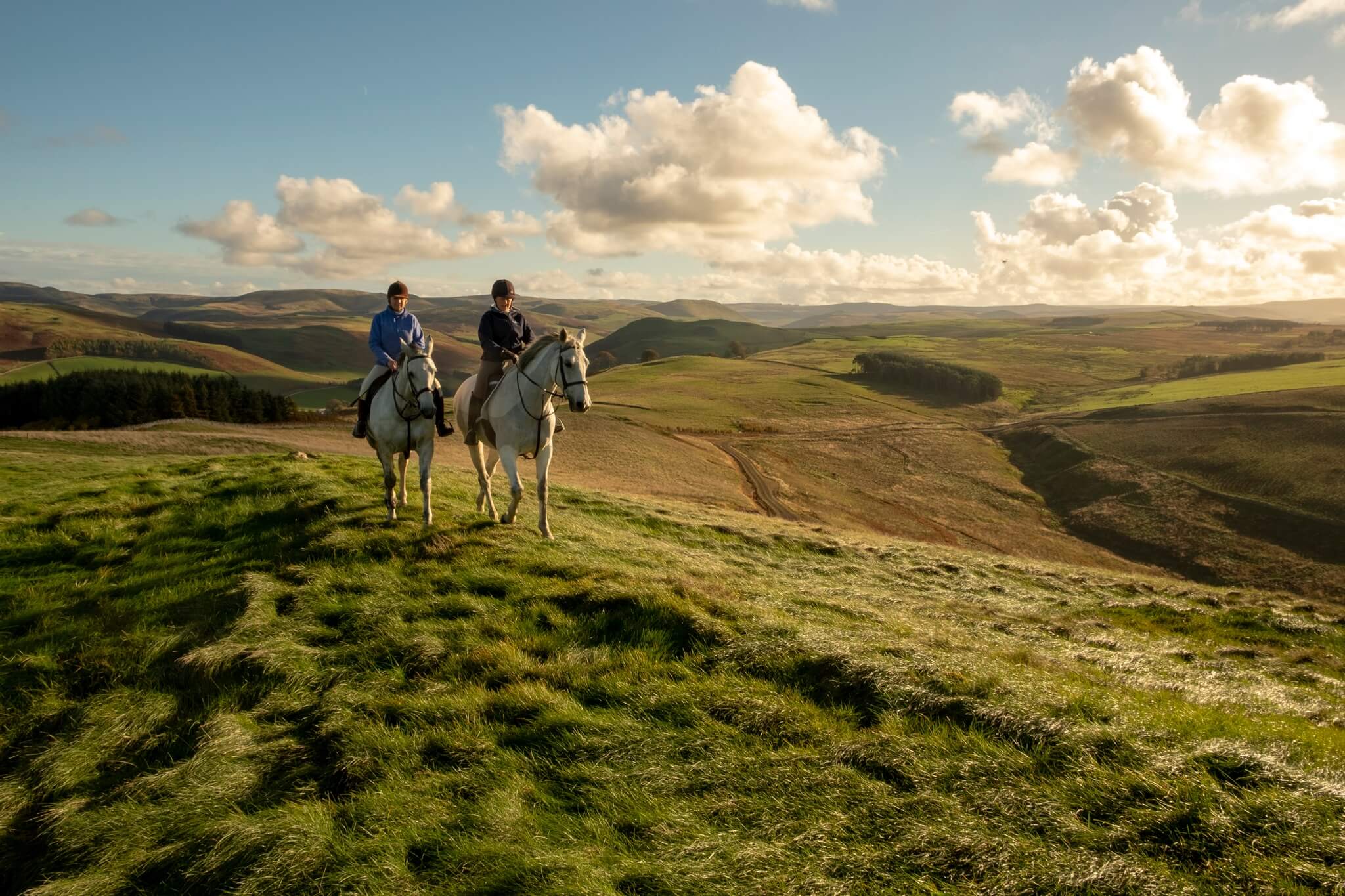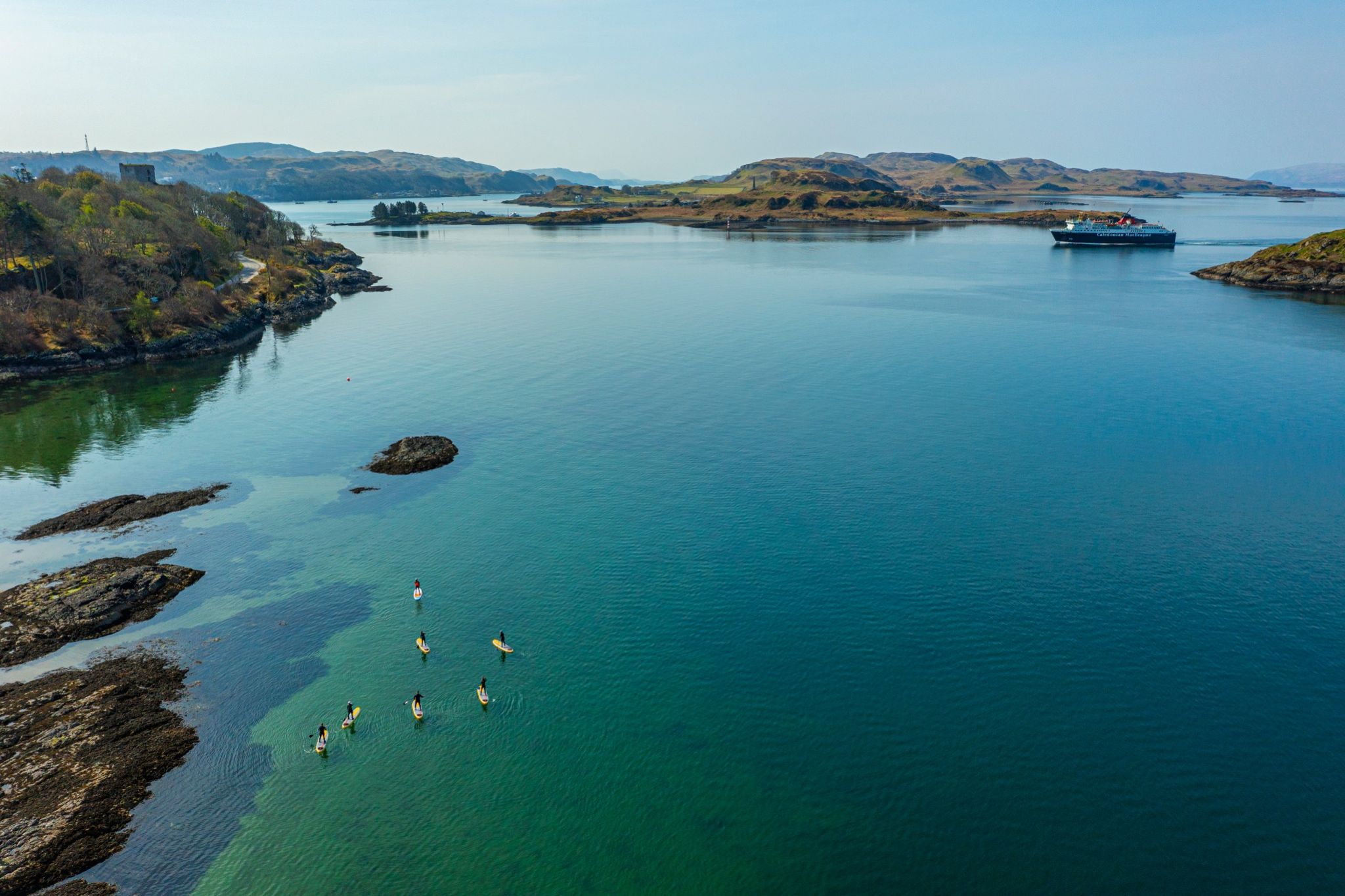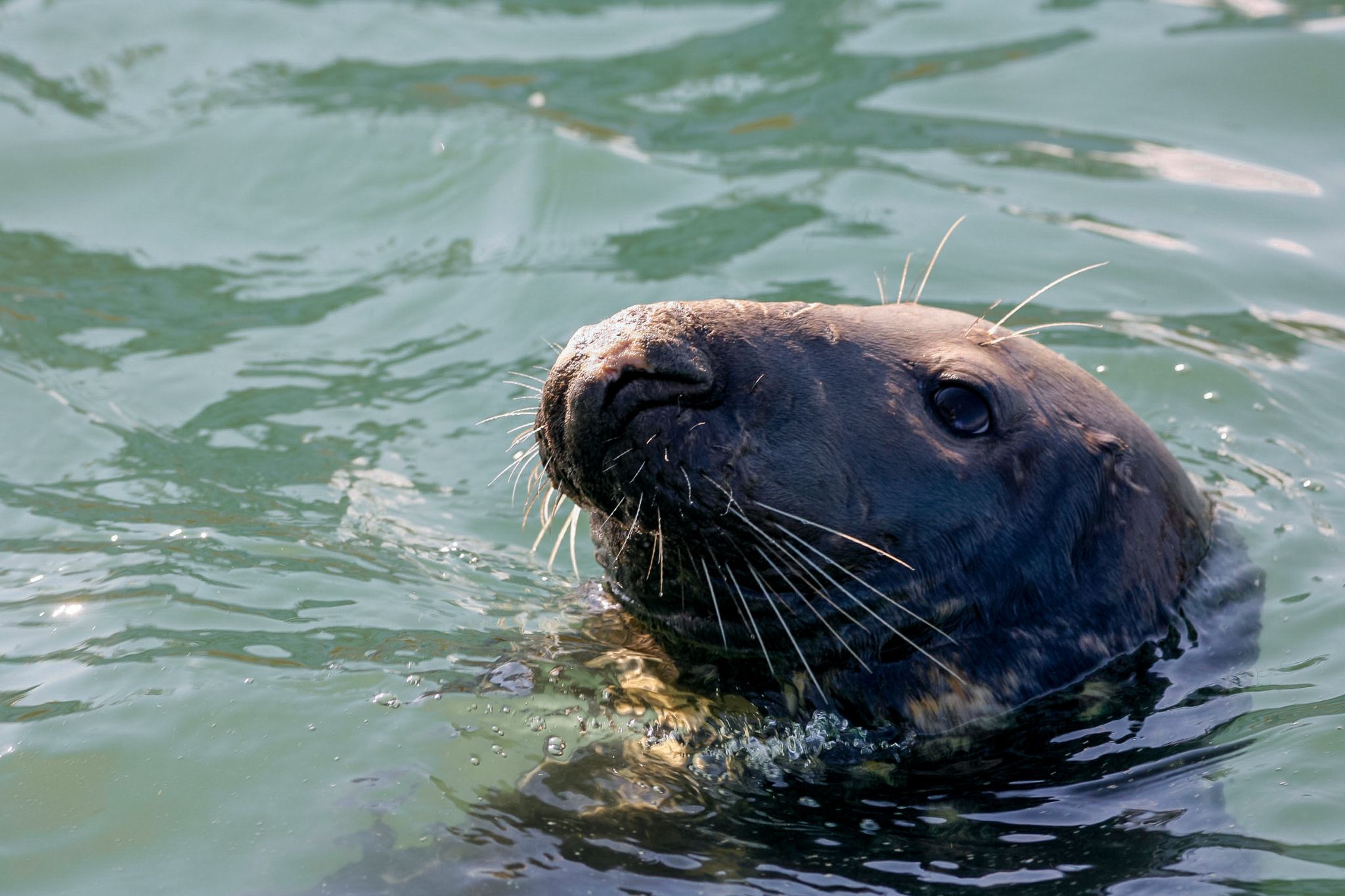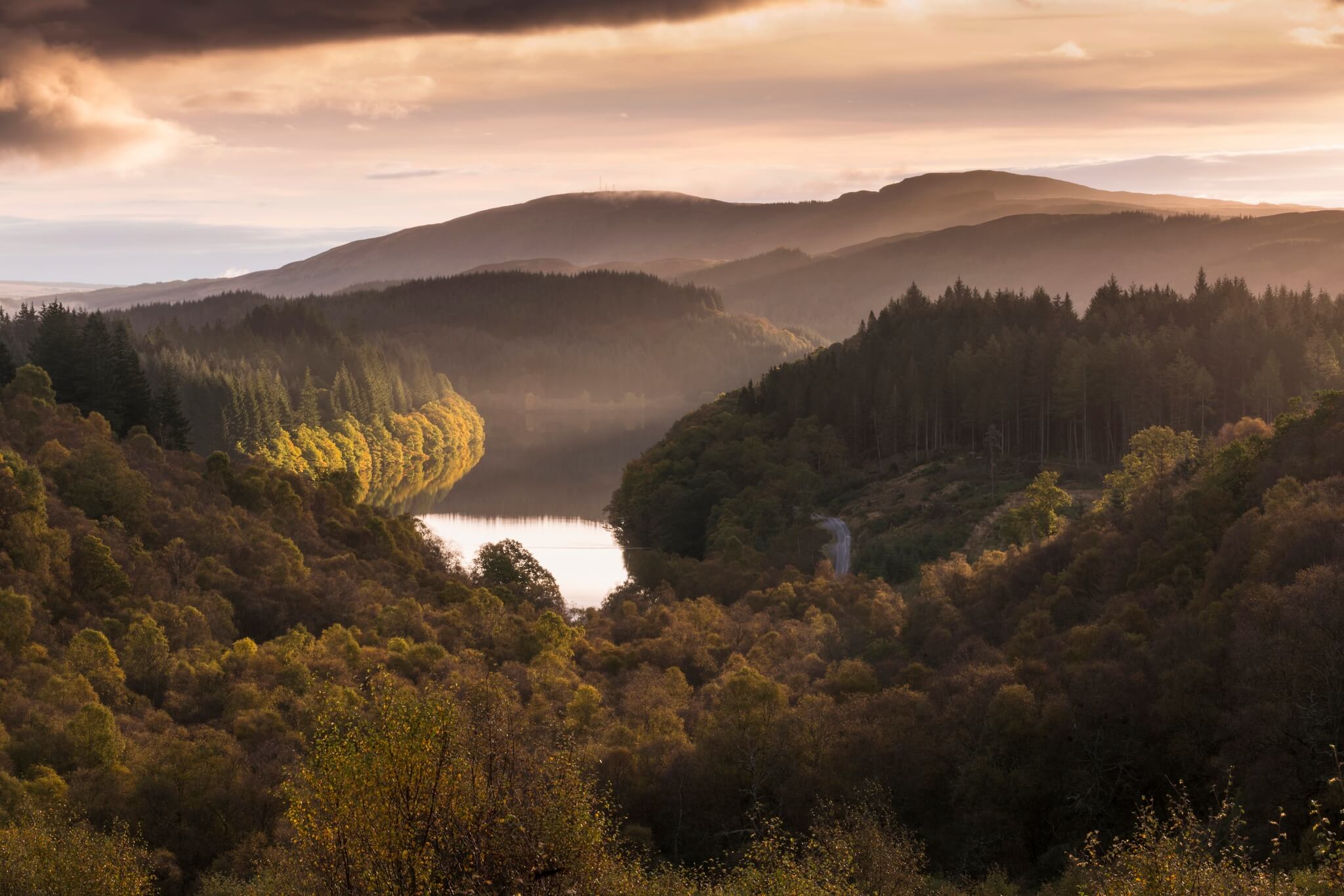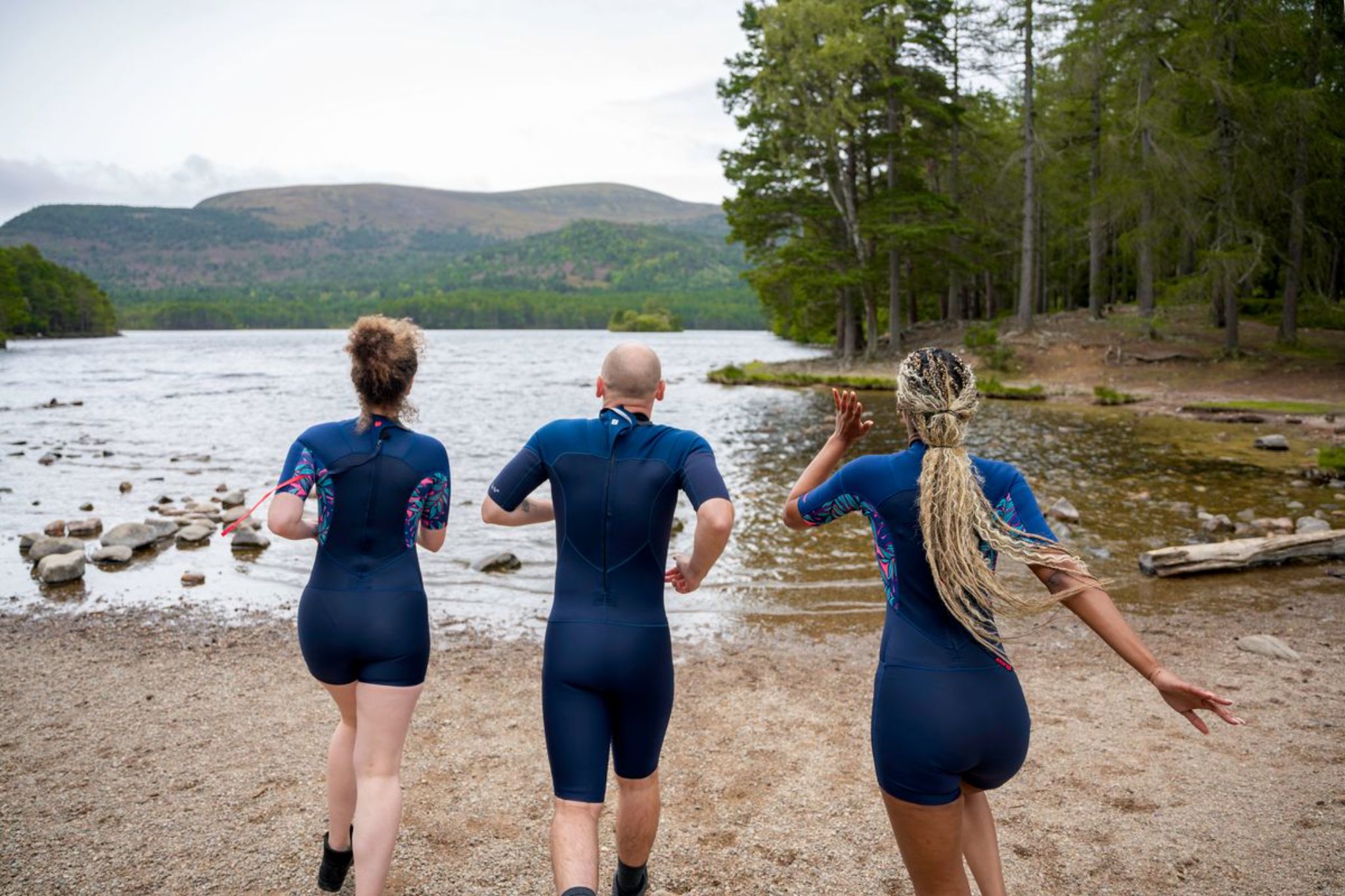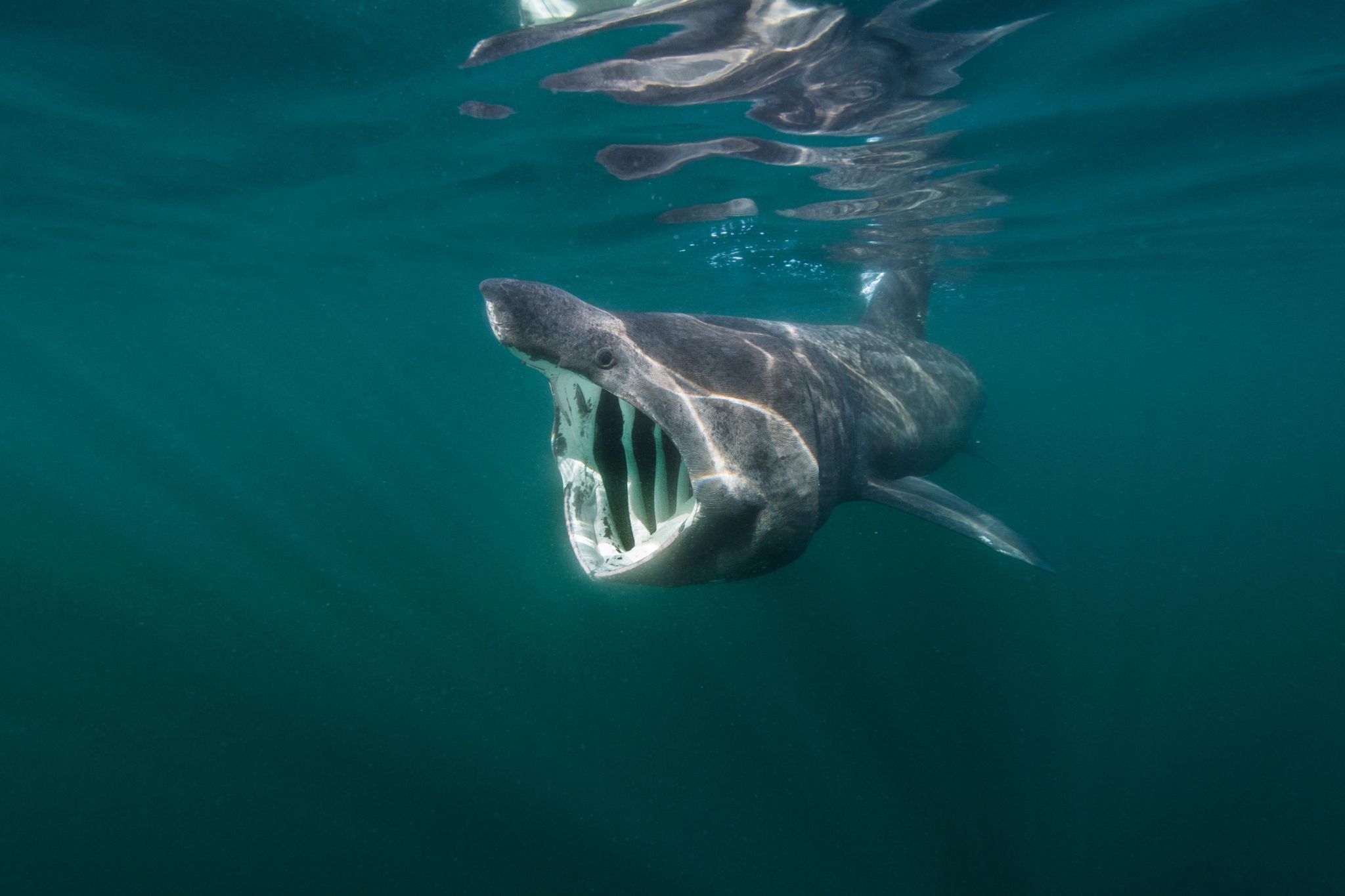
A basking shark swims with its massive mouth open for feeding.
© Nature Picture Library / Alamy
Marine
Basking shark
The second-largest living shark and fish, after the whale shark, these gentle giants scale at 7.9 m in length and feed on plankton. Summer is normally the peak shark-spotting season where you can even swim with them!
Where: Oban-based Basking Shark Scotland run boat trips and experiences taking in the beautiful inner Hebridean islands of Mull, Coll and Tiree. The tours operate from April to October where you can also swim alongside them. Other islands where you can see these magnificent creatures include Skye, Eigg, Rum and Canna, Lewis, Arran and along the Hebridean Whale Trail around the coastline of Argyll & The Isles.
When: High season: July – September; Low season: April – June, October
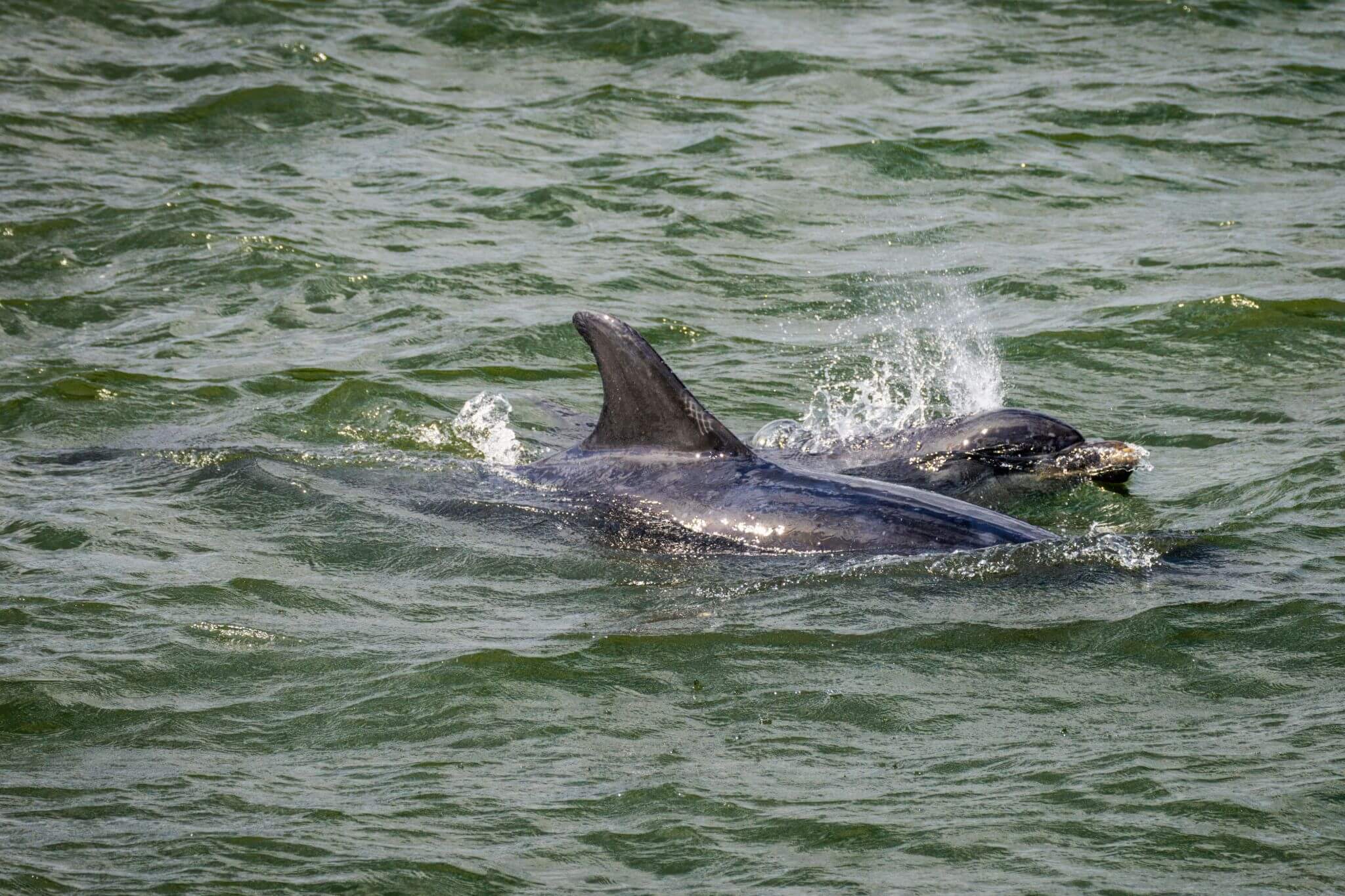
Bottlenose dolphins in the Firth of Forth
Bottlenose dolphins
Bottlenose dolphins are very social animals and will most likely pop up and say hello when you’re out on a boat trip. See them in action where they’re bound to impress you with their somersault skills.
Where: Across Scotland but in particular The Moray Firth, home to 200 bottlenose dolphins.
When: All year round. However, high season is usually from May – September.
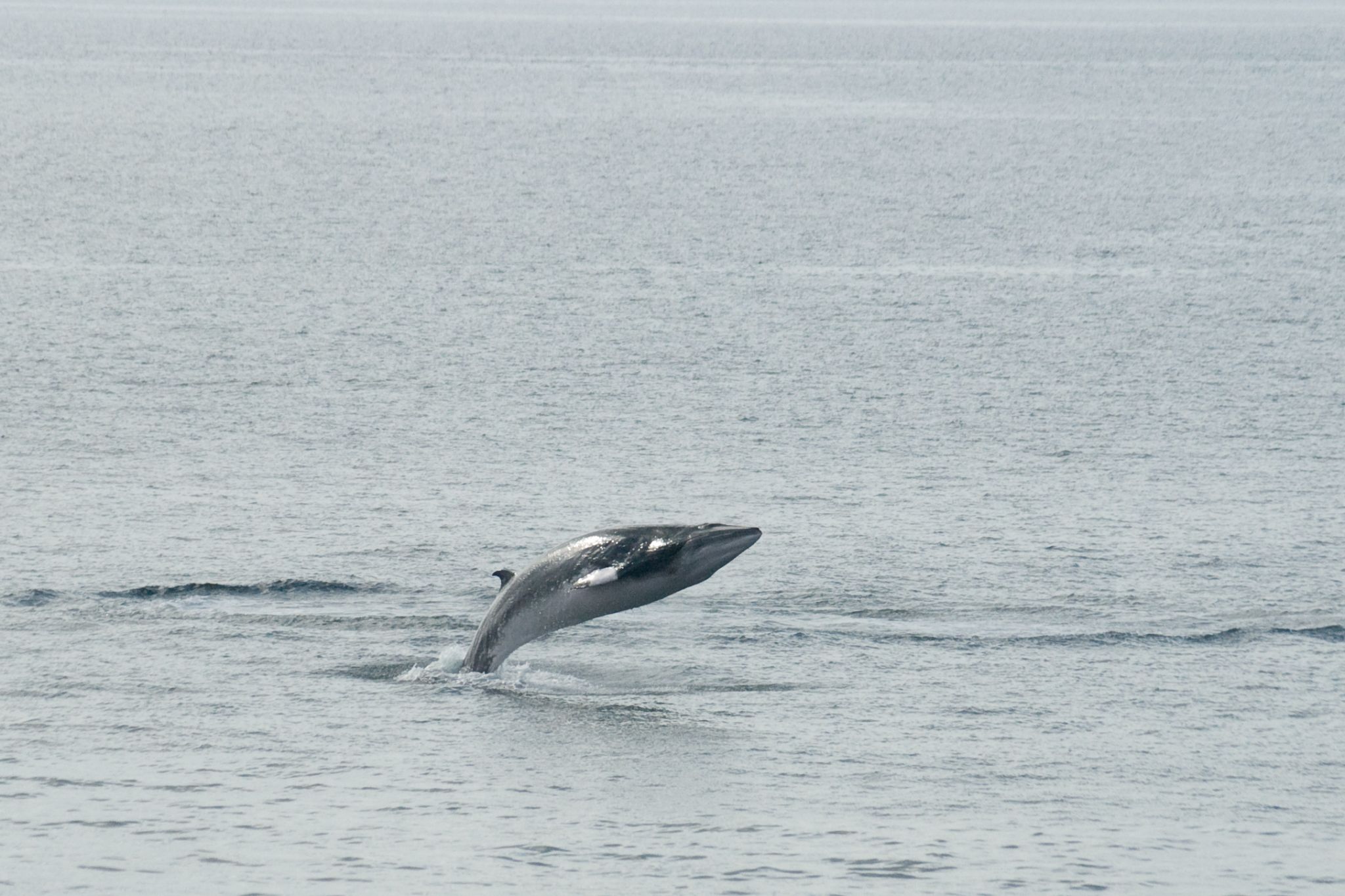
A Minke whale breaches the surface of the water along Scotland’s coast.
© iStock / ian35mm
Minke whales
The smallest of the Baleen whales found in Scottish waters. Minke whales measure between 7 and 10 metres long and are frequently seen in coastal and inshore waters around the Hebrides from early spring until mid-Autumn.
Where: The main hotspots for sightings include the Small Isles of Rum, Eigg and Muck, between the islands of Skye and Mull.
When: May – October

A majestic Orca glides through the waters off the coast of Scotland.
© iStock / Karl Weller
Orca
Best known as the ‘Killer Whale’, Orcas seek refuge in Scotland’s West Coast and can usually be spotted around the Small Isles and Skye.
Where: Your best chance of seeing orcas is on the North and West Coasts of Scotland. A small pod of them reside on the West Coast and the Northern pod can be sighted across Shetland, Orkney and around the North Coast.
When: May – September
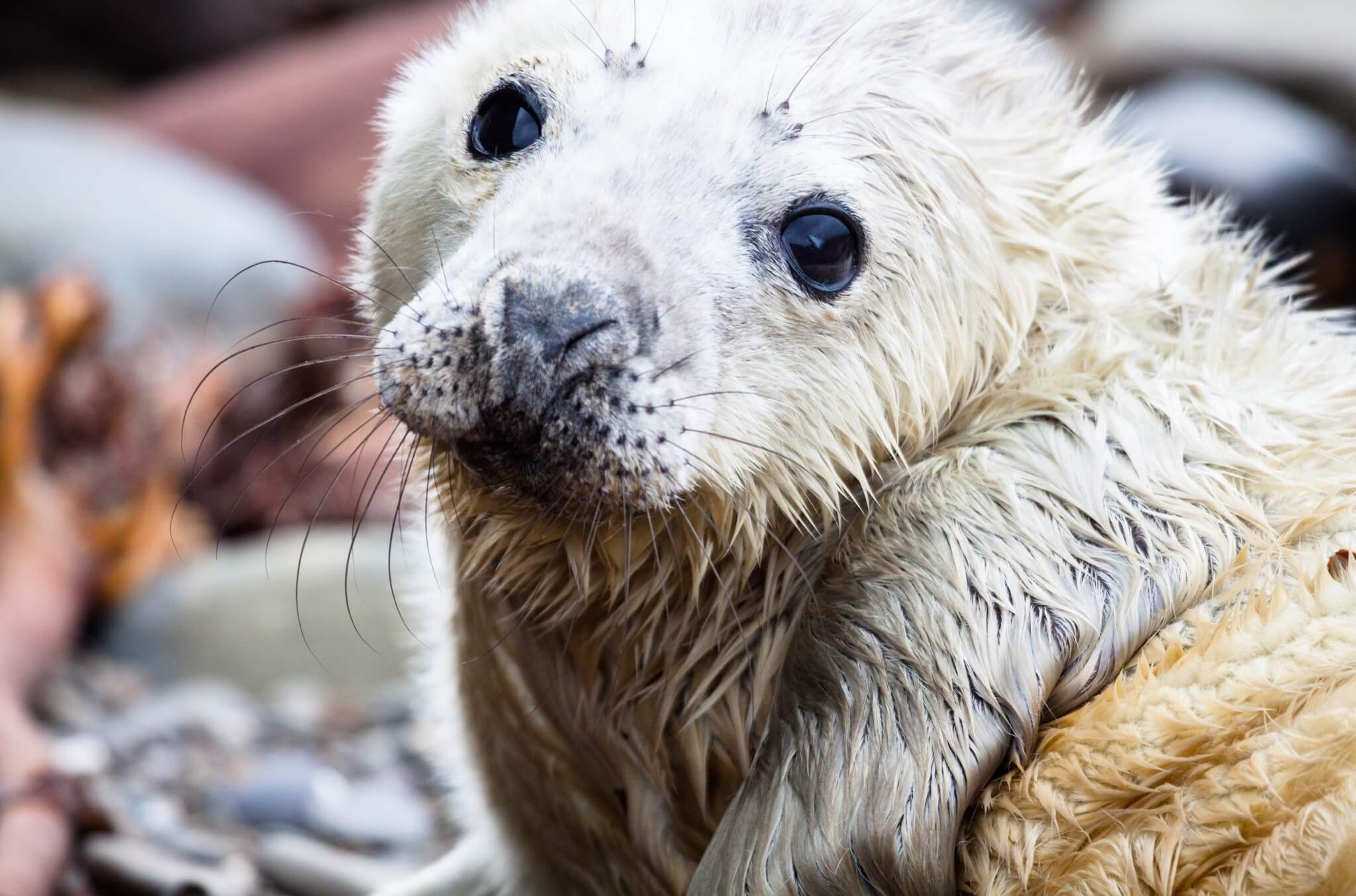
Grey seal pup
© VisitOrkney / Raymond Besant
Seals
Grey seals are very common inhabitants you can see off the coastlines of Scotland. Keep your eyes peeled in the autumn months to see if you can spot fluffy grey seal pups too!
Where: Across Scotland, but in particular the Moray Firth, Firth of Tay, Ythan Estuary and the Isle of May.
When: September – November
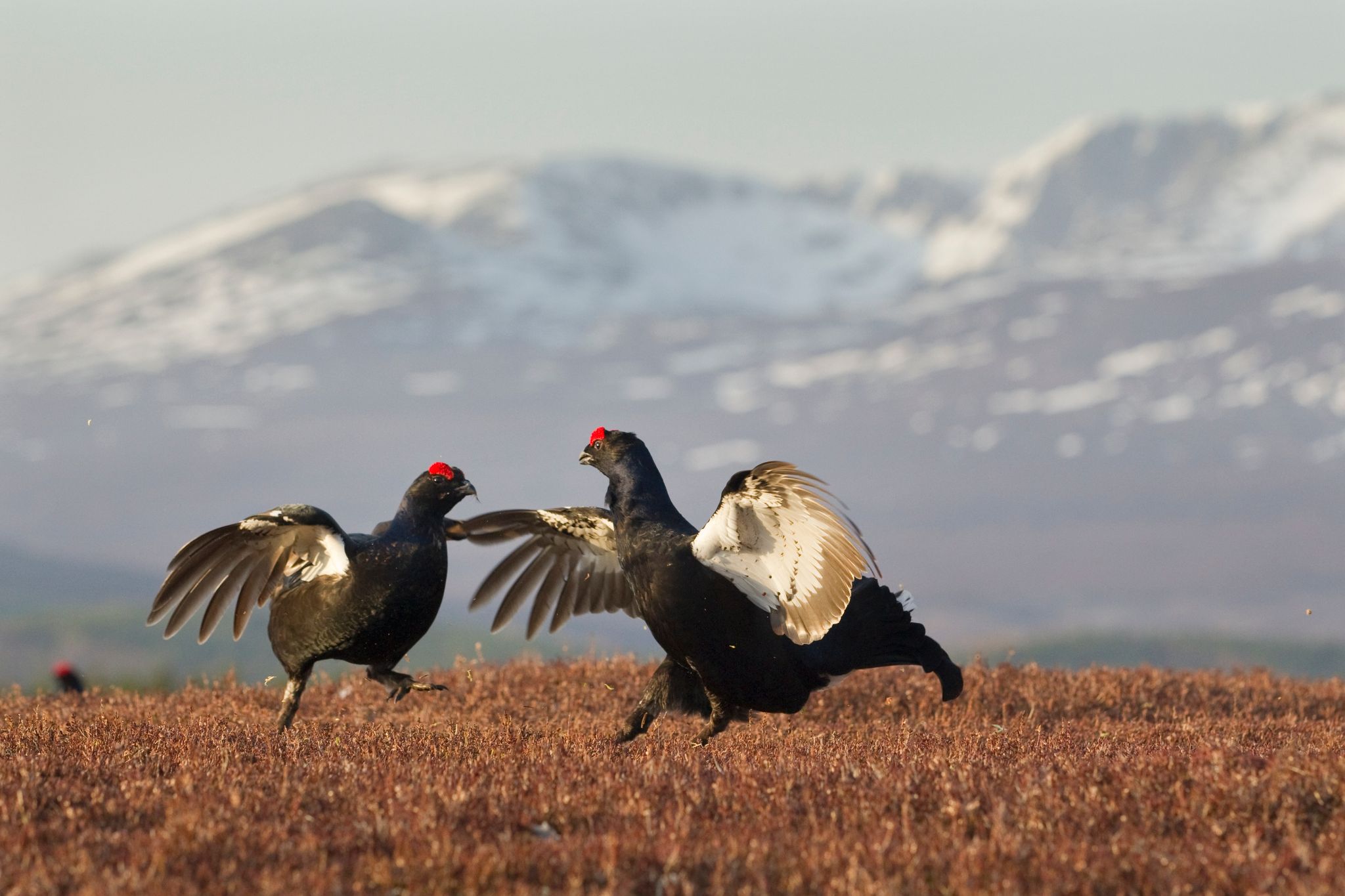
Two Black grouse in mid-dance, with snow-capped mountains in the background.
© SCOTLAND: The Big Picture
Birds
Black grouse
Not to be confused with the Capercaillie, these large gamebirds can be seen frolicking near Scotland’s moorland fringes and native woodlands.
Where: Glenmore Forest Park and Galloway Forest Park
When: All year round. However, April – July is breeding and nesting season, so there might be less chance of spotting them during this time.
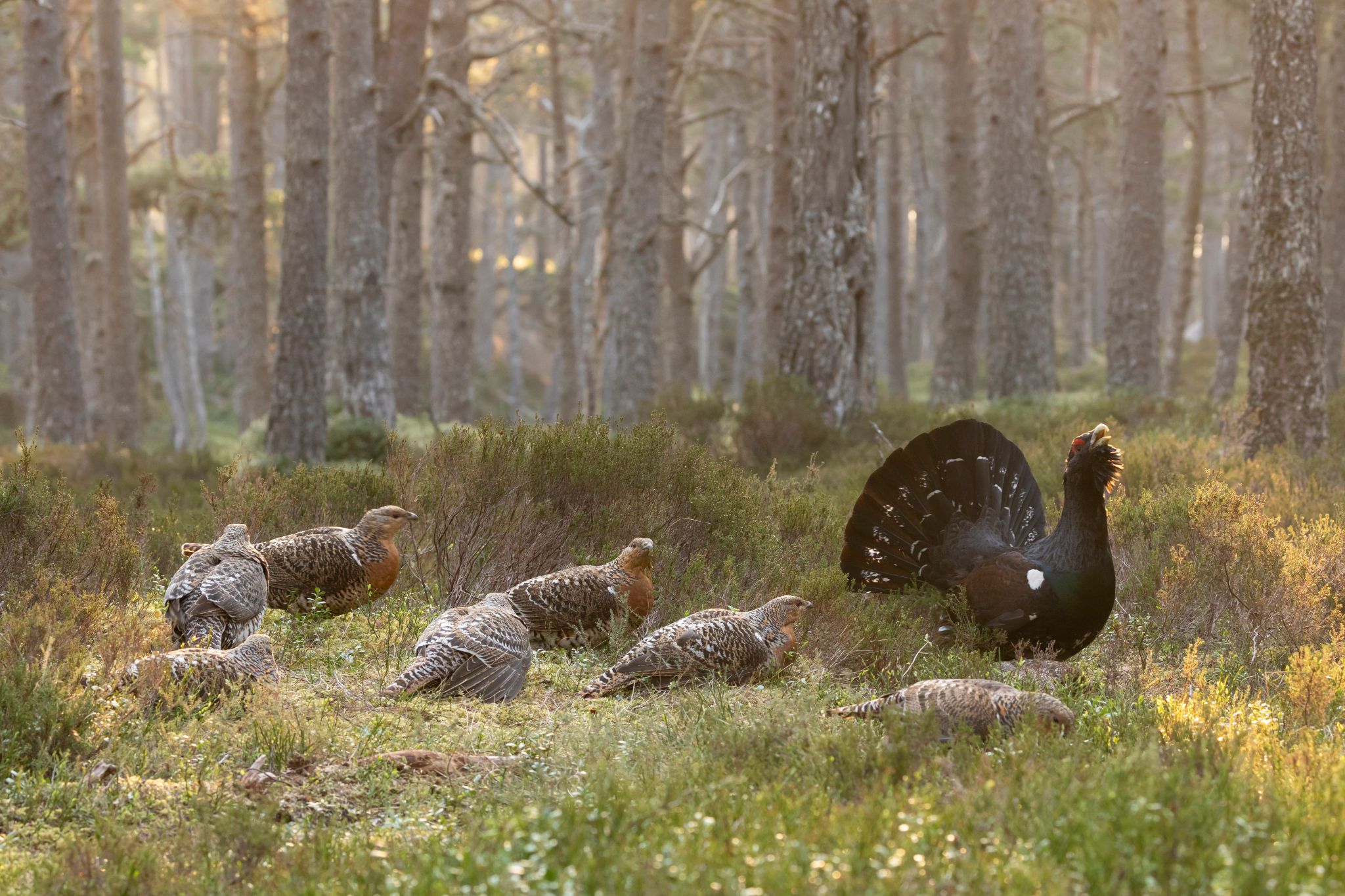
A male Capercaillie displaying its feathers among females in the undergrowth.
© SCOTLAND: The Big Picture
Capercaillies
Did you know that 80% of Capercaillies reside in the Cairngorms National Park? The turkey-sized capercaillies spend a lot of time feeding on the ground and are restricted to the native pinewoods of northern Scotland.
Where: Abernethy Forest, Rothiemurchus and Glenmore Forest Park within the Cairngorms National Park
When: All year round
Troup Head Nature Reserve Gannet Colony
© Discover Fraserburgh / Damian Shields
Gannets
One of the largest seabirds in Britain, Gannets have a very distinctive appearance with their white feathers, black wing tips, long neck and beak.
Where: Bass Rock is home to the world's largest northern gannet colony. Catch a boat trip with the Scottish Seabird Centre from North Berwick.
When: Gannets begin to return from mid-February, but reach their peak over the summer months.
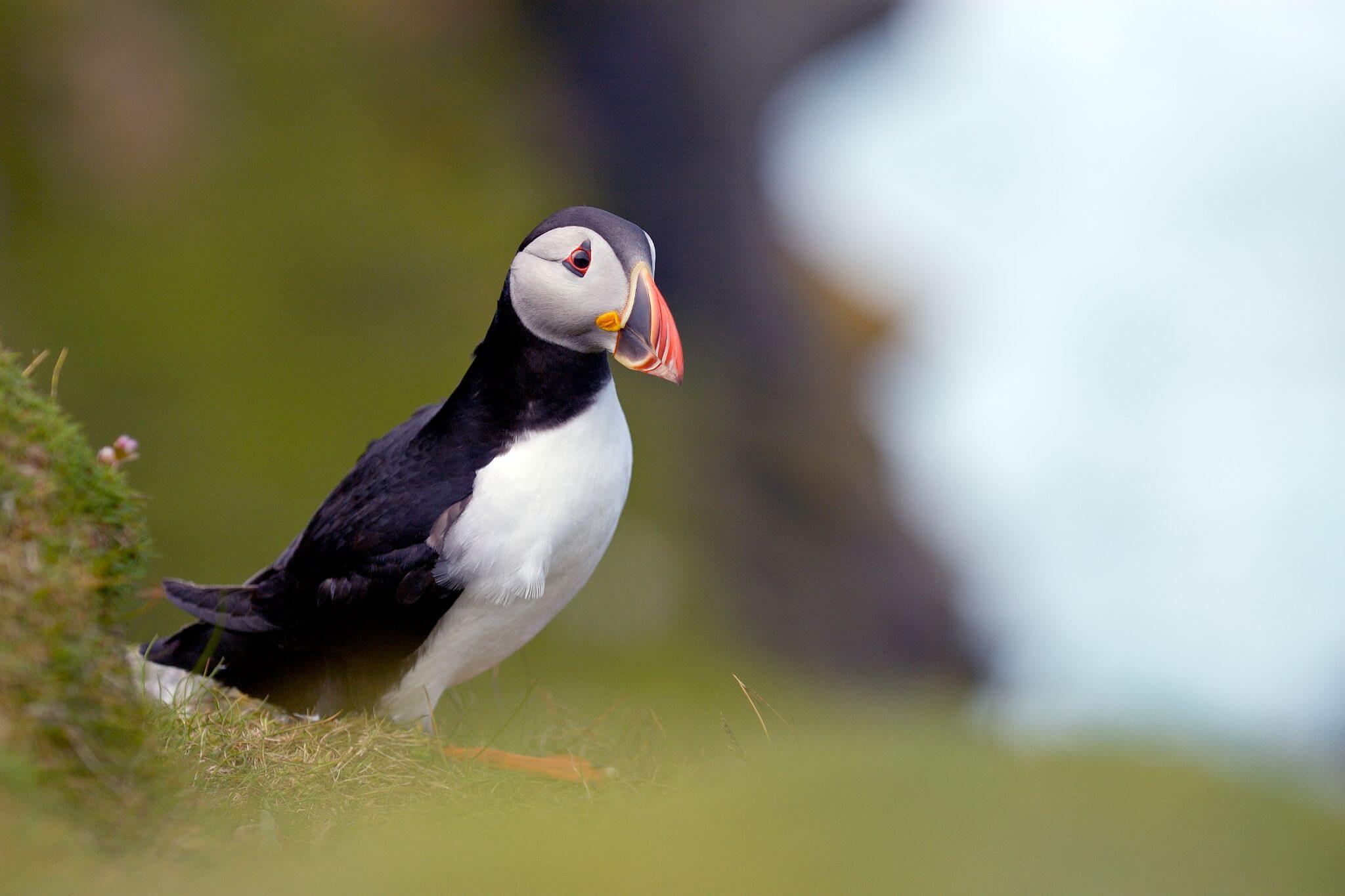
A puffin at Hermaness National Nature Reserve
© Nature Scot / Lorne Gill
Puffins
These hardy little birds are one of the many bird species you will come across on your travels around Scotland.
Where: Isle of Mull, Isle of Staffa, Shetland, Orkney, the islands of the Firth of Forth and the Isle of May.
When: April - August
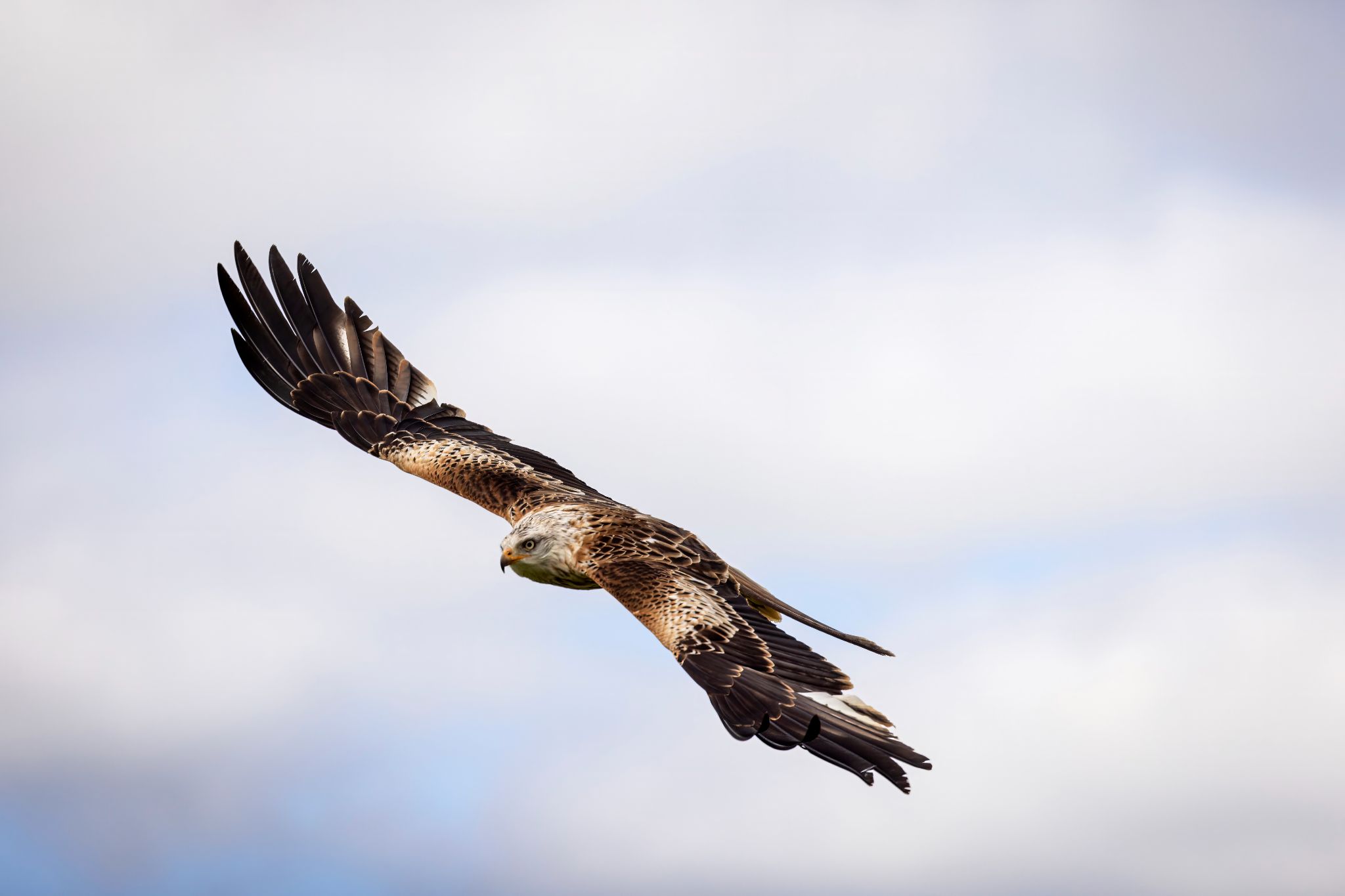
Red kite in flight at the Royal Highland Show
Red kite
Watch these impressive scavenger birds take flight across Scotland. Red kites are known for their large wingspan, reddish-brown colourings and deeply forked tail. Thanks to the successful rewilding programme in recent years, you might come across more red kites in places including the Black Isle and the Trossachs.
Where: Argaty, near Doune, Tollie near Dingwall, Bellymack near Laurieston, The Black Isle, Loch Lomond & The Trossachs National Park
When: January – December. However, high season is from October – March.

Adult male beaver stood on ice at Argaty Red Kite Centre.
© SCOTLAND: The Big Picture
Mammals
Beaver
These furry residents provide a vital role in creating thriving ecosystems, from creating dams and making ponds to building a safe habitat for lots of other wildlife creatures. They may be a little slow on dry land, but they’re excellent swimmers and can be seen near lots of river systems across Scotland.
Where: Knapdale Forest, River Earn, River Ericht, Argaty Farm, Loch Lomond Nature Reserve, Bamff Wildland, Beaver Canoe Safari with Beyond Adventure, Cairngorm National Park
When: All year round
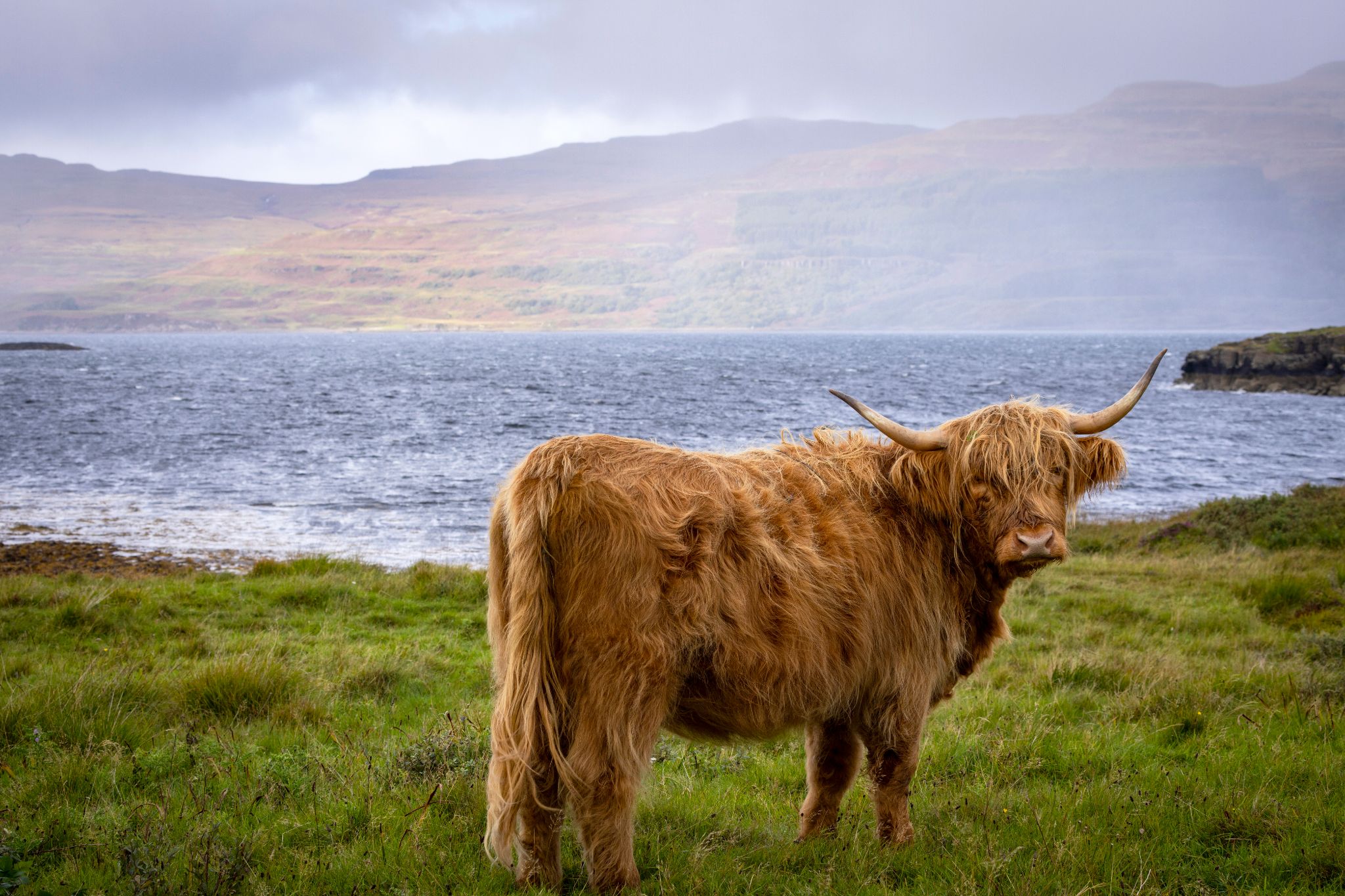
Highland cow on Mull
Highland cow
Fluffy and ginger in appearance, these wonderful creatures are well-known for their long, shaggy coats, curved horns and gentle nature. If you visit Scotland in spring, you might see some newly-welcomed additions.
Where: Where to see Highland cows in Scotland
When: All year round
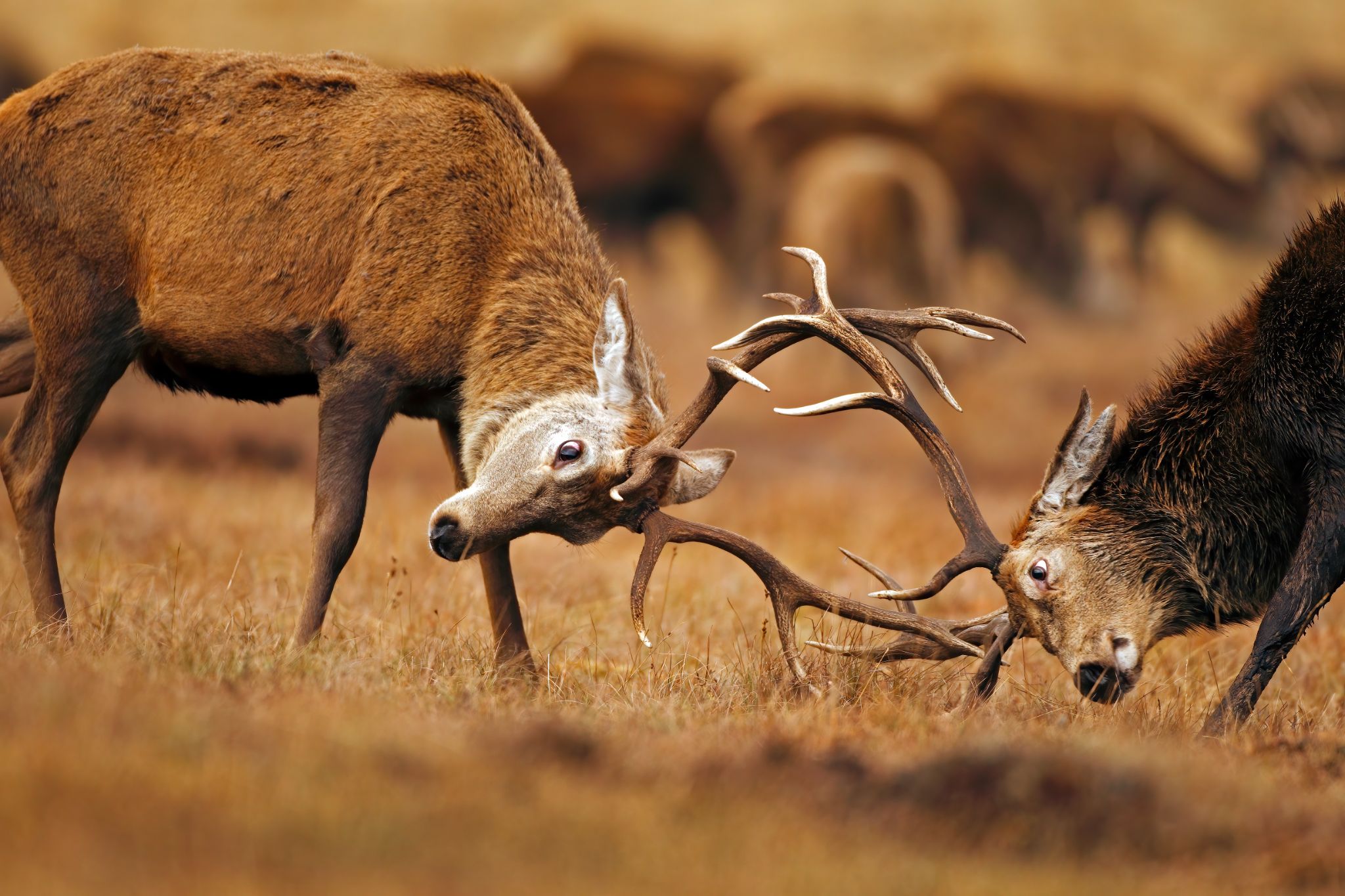
Red deer stags locking antlers during the rutting season.
© Neil McIntyre
Red deer
One of the most iconic animals associated with Scotland, the red deer is the UK's largest land mammal and can be spotted in almost every region in the country.
Where: Isle of Arran, Isle of Jura, Lochaber, Torridon, Cairngorms National Park, and Queen Elizabeth Forest Park.
When: September – November
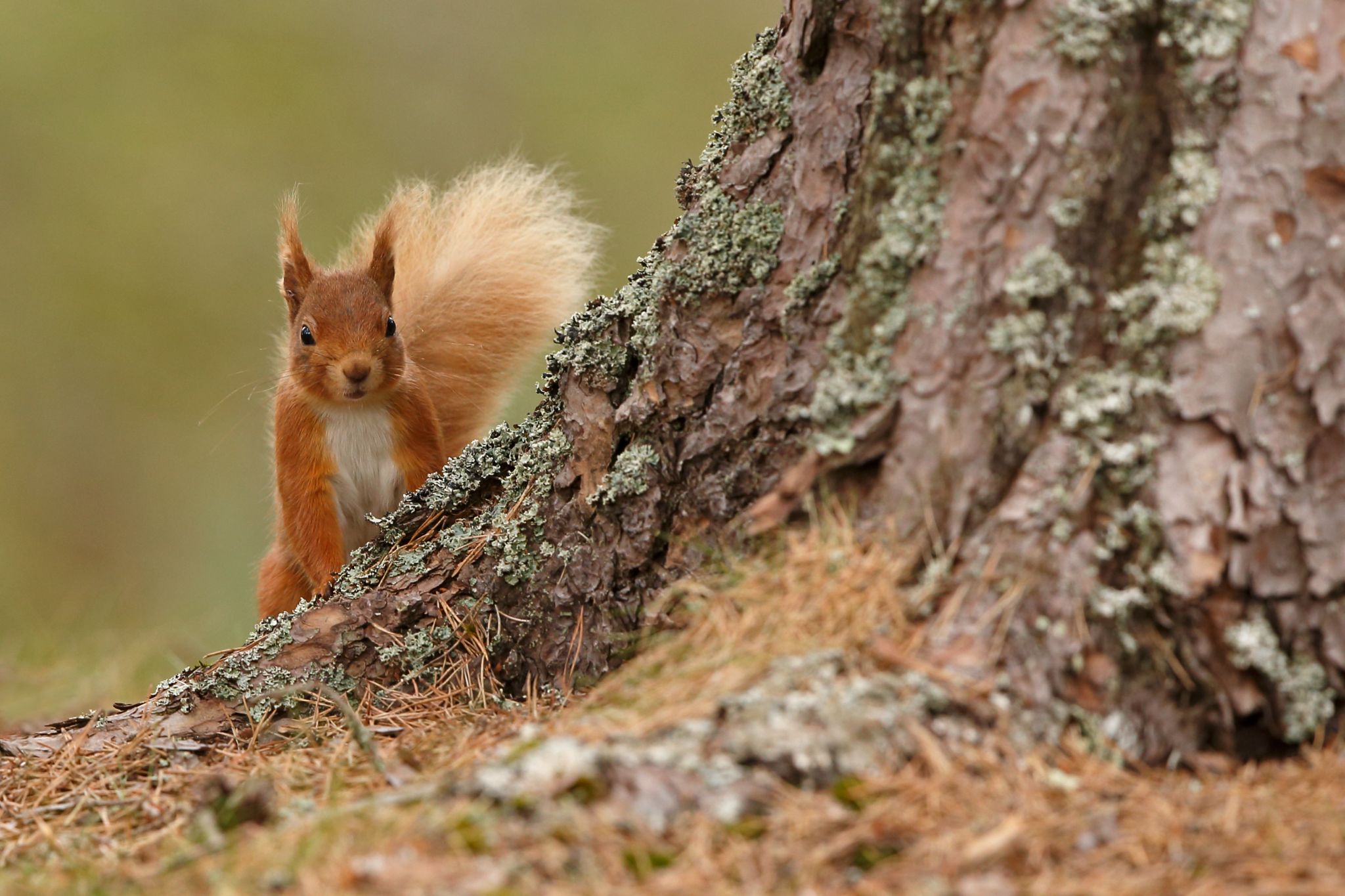
Red squirrel (Sciurus vulgaris)
© Neil McIntyre
Red squirrel
Much smaller than their grey cousins, the fluffy red squirrel is an elusive addition to Scotland's forests and woodlands. Make sure you keep quiet as you go on the lookout for these gorgeous little mammals.
Where: Highlands, Glenmore National Nature Reserve, Galloway Forest Park, Perthshire, Devilla Forest Red Squirrel Trail
When: December – January
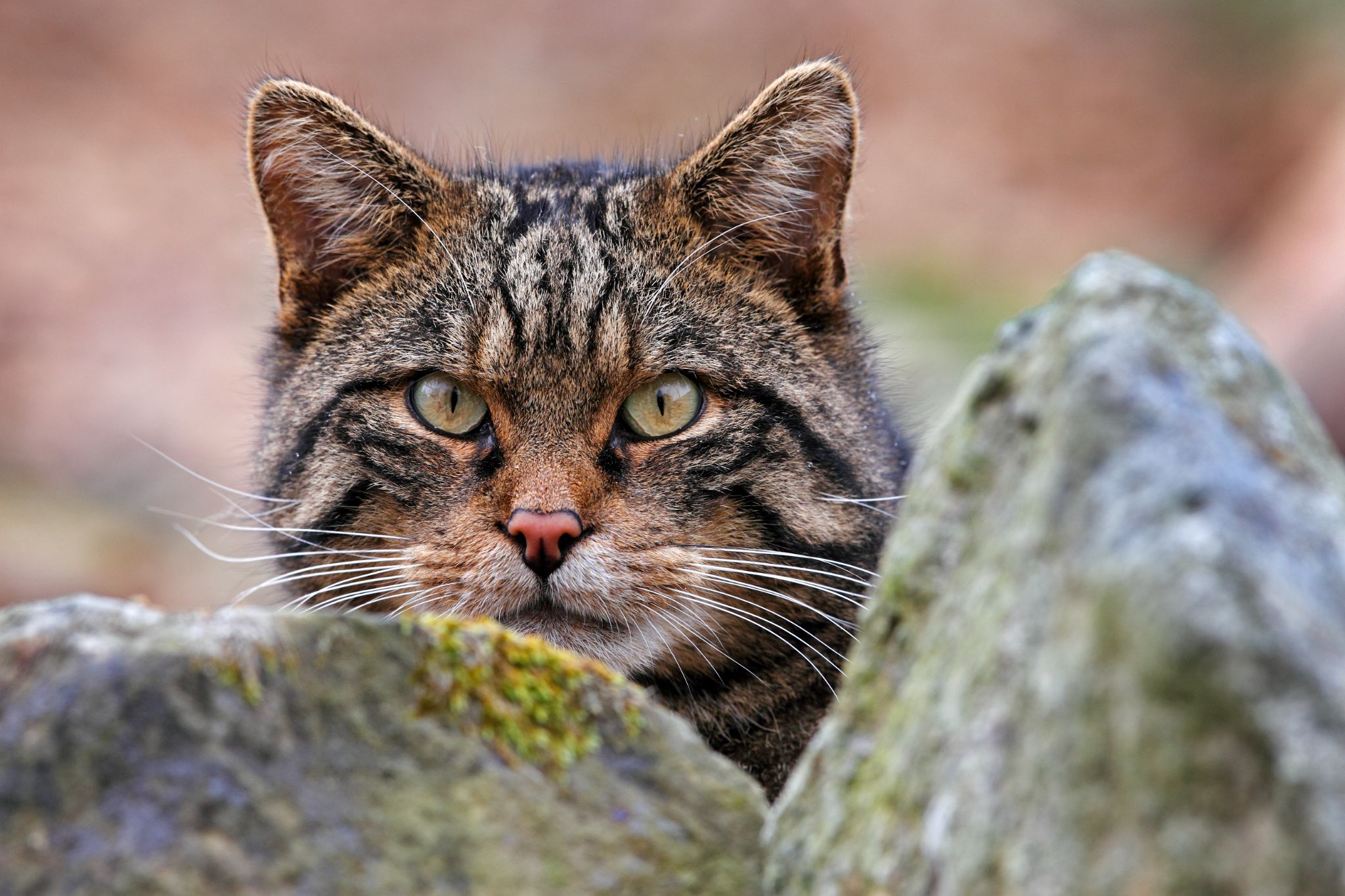
Scottish wildcat
© Neil McIntyre
Scottish wildcat
Also known as the ‘Highland tiger’, this feline bears a striking resemblance to the domestic tabby cat. Scottish wildcats can be found on the prowl in the Scottish Highlands near areas of dense cover, such as woodland edges.
Where: Scottish Highlands
When: January – March
